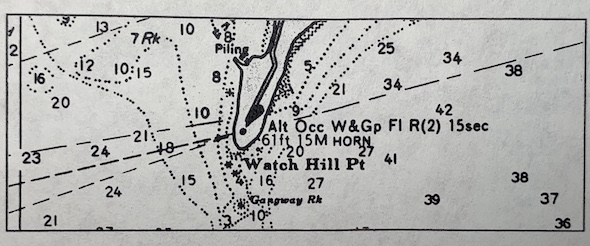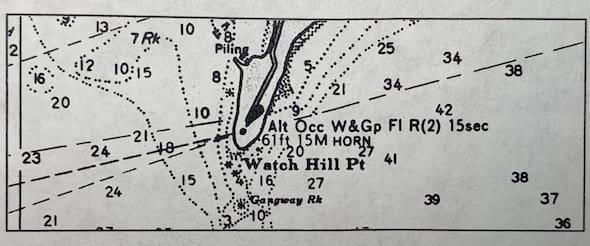Lighthouse visibility is available on charts, both paper and digital, and is stated in terms of nominal range. This is the rating of the power of the light and describes the distance at which the light will be seen in standard “clear” conditions.
But, there are factors that may change that. The most obvious factor is worsening visibility. As precipitation, haze or fog thicken, the distance at which a light is visible will diminish. A table for determining the distance that a light with a certain nominal range can be seen is printed at the beginning of the Light List, an annual publication from the U.S. Coast Guard that is compiled for each Coast Guard district. The toughest part about using this graph is that the quality of the visibility must be known. This may prove challenging at times. The result you obtain from the graph is what is called the light’s “luminous range” — the distance at which it can be seen in prevailing visibility conditions.
When it comes to lighthouses, the easiest factor to quantify is the problem of the curvature of the Earth’s surface. Depending on your height of eye above the sea surface, it’s only possible to see another object from a certain distance no matter how bright its light. There is a simple formula for calculating this:
Distance (in miles) = 1.17 times the square root of your height of eye (in feet)
With a height of eye of 9 feet above the water, a voyager can see the horizon at 1.17 times the square root of 9: 1.17 X 3 = 3.5 miles. This may not seem very far when compared to, say, a lighthouse with a nominal range of 18 miles. However, the height of the light above sea level is also a factor in the visibility calculation. This height is listed on the chart next to the light as well.
So, the geographic range (the range at which the light is visible before the horizon gets in the way) of the light must also be determined using the same formula. In the case of a light 61 feet above sea level (see the chart excerpt of Watch Hill Light below), the geographic range equals 1.17 times the square root of 61: 1.17 X 7.81 = 9.13 miles.
 |
To determine the range at which the light is visible to us given our height of eye, we add the geographic range of the light to the distance from our height of eye to the horizon. In our case, we said we had a height of eye of 9 feet, which gave us a distance to the visible horizon of 3.5 miles. We add that to the geographic range of the light — 3.5 + 7.81 — and we get 11.31 miles. This is less than the nominal range of 15 miles of Watch Hill Light, so we should see the light at approximately 11.31 miles.

